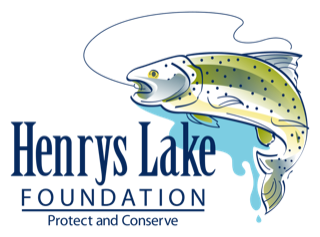The following summary lists the total dollar amount of yearly funding and the specific projects undertaken for the past 31 years of the HLF existence.
1989 $12,500
Continuing its commitment to riparian restoration, the foundation makes its largest ever funding commitment and labor to install 2 miles of electric fence on the Webster, Johnson and Magleby ranches on Duck Creek and 1.5 miles of fence on the Flying R ranch on Howard Creek.
1988 $0
Project work included foundation volunteers planting willows inside the recently fenced section on Timber Creek. The next day, 20 foundation members constructed additional fence sections on Timber Creek.
1987 $1,500
Because of 50% below normal snowpack, reservoir levels in the state are extremely low. In deference to the foundation’s partial funding of a higher cofferdam in 1986, Henrys is only drafted 2.7 feet to meet downstream irrigation needs. A second solar electric fence project is initiated and funded by the foundation on lower Timber Creek on the Hunt and Coe properties. The foundation supplied labor along with other sportsmen and conservation groups to plant 3500 willow shoots on the newly fenced section of Duck Creek.
1986 $3,000
Facing a potentially harmful drawdown of the lake due to needed outlet dam repairs, the foundation offers financial assistance for the construction of a higher cofferdam to reduce drawdown. As a result, the lake is drawn down only 3.2 feet with no apparent ill effects on the fishery.
1985 $2,300
The first-ever riparian restoration effort on Henrys Lake is developed and totally funded by the foundation. In cooperation with rancher MrMagleby, 3/8 mile of Duck Creek is cordoned with a solar-powered electric fence by volunteers from the foundation, providing a blueprint for future cooperative stream rehabilitation efforts statewide.
1984 $2,500
A financial pledge is committed to IDFG for future stream restoration and culvert work at Hwy 87 bridge over Targhee Cr. in order to improve the upstream passage of spawning Yellowstone cutthroat. Anecdotally, catch rates in 1984 increase 8 fold to 1.70 fish/hr. versus the .21 rate in 1981.
1983 $5,000
Two diversion fish screens are installed on Diamond D Ranch on Howard Creek with the support of a foundation grant.
1982 $300
As a result of IDFG consultation with the foundation, area landowners and sportsmen, the first Henrys Lake Enhancement Plan is developed. This plan provided for a reduced catch limit of 2 fish, stocking and catch rate objectives are established, habitat improvement projects are identified and the stocking rates of cutthroat, brook and hybrid trout are dramatically increased. Separately, to reduce the amount of cross genetics with the Yellowstone cutthroat, a 3-year commitment to an IDFG hybrid sterilization research project is granted.
1981 $500
The first foundation project is the purchase of nets for IDFG to study fry predation after planting. The foundation also provided a backhoe and manpower to rehabilitate Wild Rose Creek for improved spawning.
